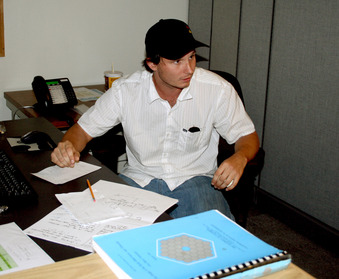
David Kaluna was born and raised on the Big Island of Hawaii. David has just graduated from Hawaii Community College with an associate’s degree in Electronics technology. He plans on continuing his education by going to UH Maui College to enroll in their new electronics engineering program. In the future, David hopes to secure a job at the Thirty Meter Telescope and to continue living on the Big Island.
Home Island: Big Island
High School:
Institution when accepted: Hawaii Community College
Akamai Project: Airflow Optimization for the Keck Observatory Domes
Project Site: W.M. Keck Observatory
Mentor: Craig Nance
Project Abstract:
The W.M. Keck Observatory consists of two 10-meter telescopes at the summit of Mauna Kea, Hawaii. For the telescopes to obtain the clearest images, internal dome temperatures must be as close as possible to outside temperatures. For Keck to accomplish this, each dome has a ventilation system consisting of an 8-ft-diameter tunnel with a 100-hp fan at the end, drawing air through the dome. The fans have the ability to change the pitch of their blades, governing how much air passes through the tunnels. According to a Keck technical report, each fan should vent its dome at a rate of 21000 m3 of air every six minutes, which corresponds to a tunnel airspeed of 28 mph. Either too much or too little air passing through the dome could degrade telescope imaging: too much air can vibrate the telescope, while insufficient airflow can allow heat to build up.
First, we measured the wind speed through the tunnels by installing anemometers (wind speed gauges) in both ventilation tunnels. Keck 1 and Keck 2 were designed to the same specifications, so to our surprise, the Keck 1 tunnel was measured at a rate of 45 mph while Keck 2 was measured at 35 mph. In addition, both were substantially higher than the 28-mph speed prescribed by the technical report. We considered other factors that might affect the tunnel wind speeds, such as dome shutter positions, dome azimuth, and outside wind speed and direction. These other factors had little or no effect on the fans venting the dome. Our next step is to study how varying the pitch of the fan blades changes the rate of airflow, and to see if the prescribed speed of 28 mph can be attained. Finally, we are exploring ways to reduce the power consumption of the fan motors. A possibility is the installation of variable-frequency drives that would allow the motors to work more efficiently but still accomplish the desired results. Optimizing both the dome airflow and the power consumption for Keck Observatory benefits their telescope images and their electric bill alike.